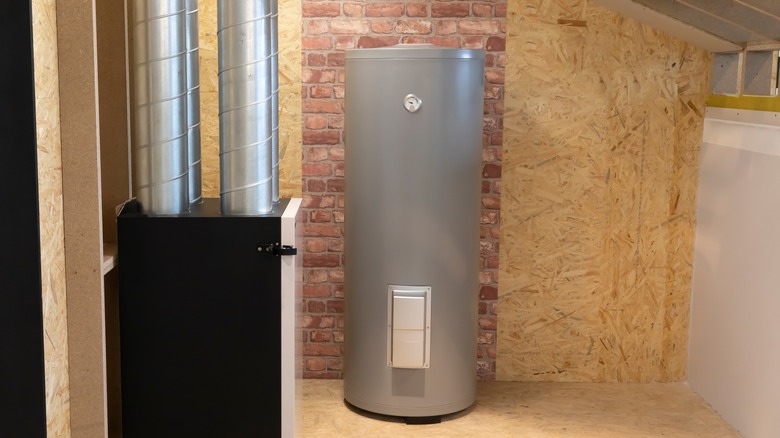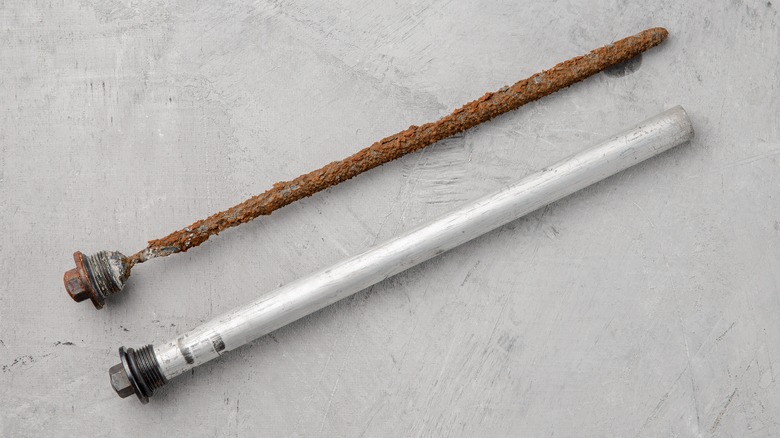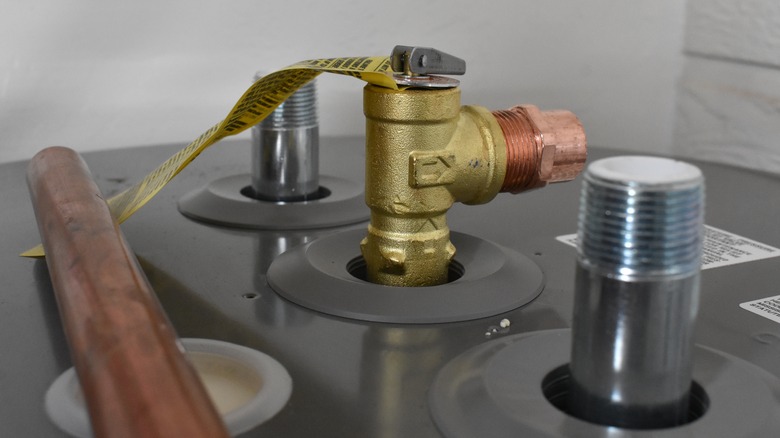This Maintenance Tip May Be The Secret To A Longer-Lasting Water Heater
Waking up to a cold shower, the inability to wash your hands with hot water, and not being able to toss a load of laundry in is frustrating. Water heaters provide support throughout the day, and when they stop working, it becomes necessary to repair or replace the water heater. Some tank maintenance tips could help extend the life of your water heater, though, and that means spending far less to keep your home safe. One task to consider is replacing the anode rod, a component that reduces the amount of storage tank corrosion. Not difficult to repair by the handy DIYer, this is one task to put on your to-do list this weekend.
The average cost to replace a hot water heater ranges from $800 up to $2,000, depending on the size and type of appliance you purchase. If you don't need to replace the system and can just repair it, professional repairs could cost between $200 to $600, depending on what needs to be done. When possible, it's better to avoid having any of these costs by simply maintaining the hot water heater.
Water heater maintenance typically includes inspections, flushing the tank once every six months or so, checking the ventilation, and adjusting the temperature and pressure valve annually. Insulating it and checking the thermostat could also help conserve energy. Add replacing the anode rod to the list to help minimize one of the most common problems with some tanks – mineral buildup.
How replacing the anode rod can extend the life of your water tank
One of the most important times to consider the replacement of a water heater is when there's a buildup of visible corrosion on it. Corrosion causes the metal tank to wear thin, and over time, it breaks down so much that the pressure of the water within becomes too much for it, causing leaks or, in some cases, a burst tank. When there's corrosion, replacement becomes necessary, but replacing the anode rod every 2 to 5 years can help you avoid that, with some experts recommending every other year.
This rod works to offset the high temperature and moisture conditions in the hot water heater that lead to corrosion buildup. This rod, which runs down the middle of the tank, is made of metal, usually aluminum, magnesium, or a zinc alloy (or a combination of these). These metals are quite valuable because they create an environment that's less likely to corrode. In fact, any corrosion that occurs within that space will happen on the rod itself, protecting the body of the water heater as a result.
This occurs due to a process called electrolysis, which prevents the degradation of the metal tank. The rod attracts all of the components likely to cause corrosion, including the sediment and minerals found in water. By drawing up that sediment, it prevents it from sitting on the tank allowing for breakdown to occur.
How to replace the anode rod in your water heater
To extend the life of your water tank, you can replace the anode rod yourself with a few helpful tools, including a ratchet or impact wrench and breaker bar. You'll need to turn off the power to the tank at the breaker, close the water supply valve, and then drain the hot water tank. If possible, use a hose connected to the valve that goes directly to a floor drain to do this. Be sure to open the drain valve to reduce pressure in the tank.
Once empty, locate the anode rod at the top of the tank near the hot water outlet line. Generally, it is in the center of the tank, but if not, use your owner's manual to locate it. You'll then need to use a socket wrench or breaker bar to remove the anode rod. Once loosened, you can then easily pull the rod out. You'll then need to replace it (you can purchase several types of anode rods from home improvement stores).
Once you have the new rod in place, use Teflon tape to create a seal, tighten it back up, and close the drain valve. You can then turn on the water supply to refill the tank and turn the power back on. If you notice any corrosion of the tank prior to this process, replacing the tank may be necessary instead.



